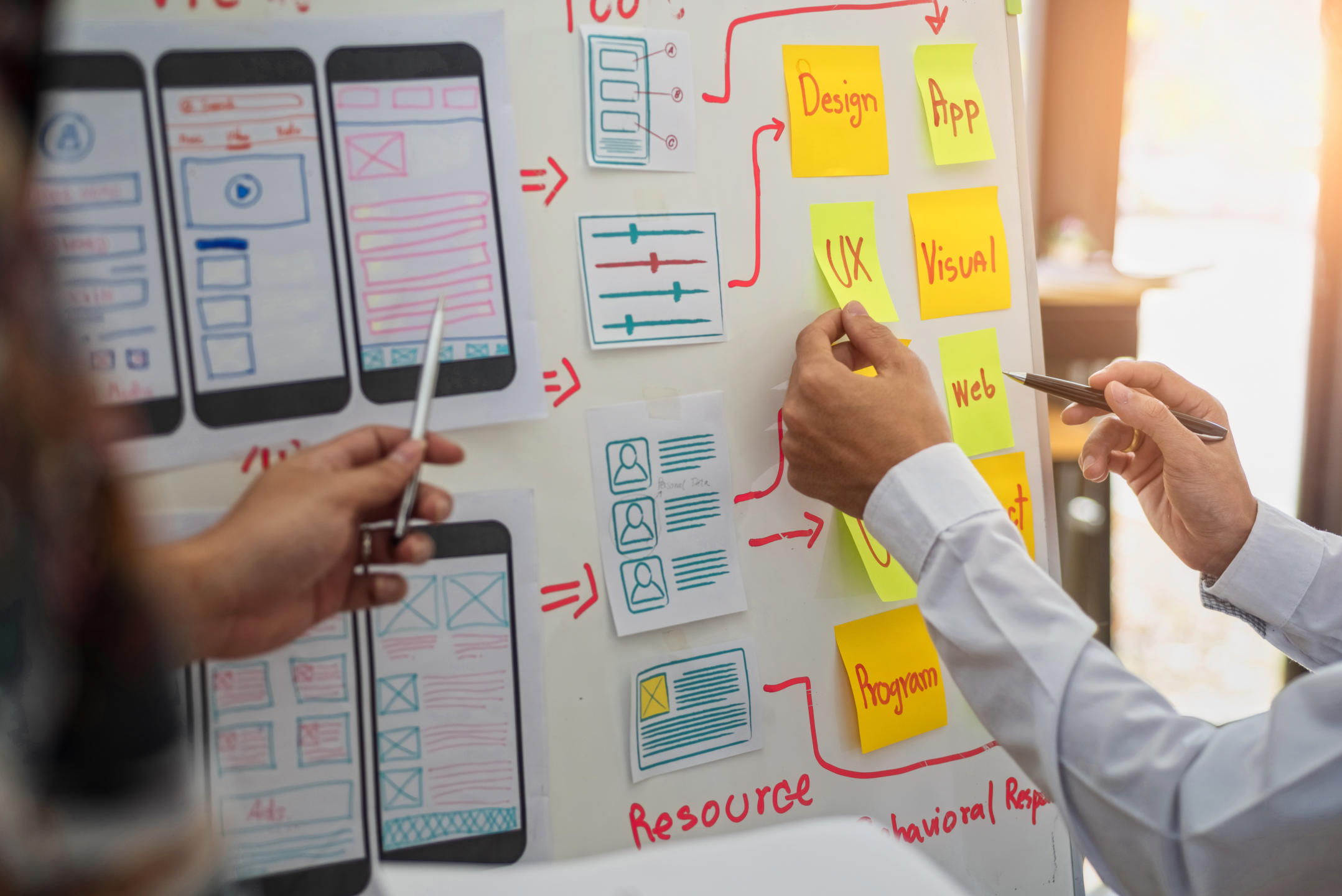Table Of Content

It refers to the changes over time in the design platform, focusing on how users track their progress and if they can resume interaction with the product later. This involves predicting the medium through which users interact with products. For instance, is the user navigating an app on a smartphone while standing on a crowded train or browsing a website while seated at an office desk? All these factors exert an influence on the interaction between the user and the product.
D: time
But a lot of companies apparently thought it was enough to make their designs look like they were simple, as opposed to actually making their design simple to understand and use. General Assembly’s User Experience Design Immersive is a transformative course designed for you to get the necessary skills for a UX Design role in three months. Visual representations are the elements of an interface that the user perceives; these may include but are not limited to "typography, diagrams, icons, and other graphics". This encompasses graphic elements like images, fonts, and icons with which users interact.
Latest Design & UX Jobs
It does this by carefully crafting each and every moment of interaction between the user and the product to ensure optimal usability, functionality, emotional engagement, visual appeal, and accessibility. Involve the community in the design process by soliciting feedback and ideas from residents, library patrons and local organizations. This ensures that the library reflects the needs and preferences of the community it serves. It places its key features—Home, Search, Reels, Shop and Profile—at the bottom of the screen. Interaction design makes sure that apps are made to be intuitive and effective on smaller screens by optimizing them for touch-based navigation. It’s also important to note that the way something is designed is purposely meant to elicit and influence a response from the user.
What are user experience (UX) and user experience design (UXD)?
Instead of trying to trap your users inside the product, try to make it as easy as possible for them to move around. Discoverability refers to how easily someone who has never used your product can find the different features it offers. This is a major aspect of good usability and interaction design in general, because the first impression your user has will be the most important one. Consistency and predictability in interactions help users build mental models of how a system works. When a user takes a specific action, they should be able to predict the outcome. Attractive interfaces with pleasing interactions can enhance the overall experience.
A motion designer creates dynamic animations and motion graphics for various digital platforms and media. They combine design principles (including interaction design), visual storytelling, and technical animation skills to bring static designs to life. Motion designers typically work in the games industry, in creative design agencies, or in marketing and advertising. It can influence feelings, highlight important details and guide users on what to do next.
Even better than well-implemented error messages is a careful design which prevents a problem from occurring in the first place. You have to deeply understand the essence of a product in order to be able to get rid of the parts that are not essential. The main difference with the Gutenberg diagram is that the Z-pattern suggests viewers will pass through the two fallow areas. Otherwise they still start and end in the same places, and still pass through the middle. As with Gutenberg, a designer would place the most important information along the Z-pattern’s path. Conforming to a convention for example, may be in the way a page is laid out.

The role of IxD in UX design

The main way to understand if a new version has been more successful with users is to engage them directly, ask questions and capture the results. An interactive design program would make this easier to carry out user research. According to a study by DigitalRiver, for example, some 72% of users who abandon an online cart do so due to a bad user experience. Interaction Design is the creation of a dialogue between a person and a product, system, or service. This dialogue is both physical and emotional in nature and is manifested in the interplay between form, function, and technology as experienced over time.
References and Where to Learn More
How to Practice Sustainable UX Design - Built In
How to Practice Sustainable UX Design.
Posted: Wed, 25 Oct 2023 07:00:00 GMT [source]
To reach the next level of the digital experience, continue to understand user behavior further. Interaction design is a fundamental part of the user experience that focuses on the interactive design of digital products. As discussed by author Alan Cooper, goal-driven design (also known as goal-directed or goal-oriented design) explores the end-user goal for a web page or app page. With the user’s end goal in mind, an interaction designer should problem-solve and create interactions to help them achieve it, rather than focus on the capabilities of the technology they provide. Unlike user experience design, IxD focuses on engineering the technology system to support the user’s experience. User experience also includes more than just interaction design – for example, it can look at content, user testing, and user persona mapping.
User Testing
They add to the app’s overall feel to make the user experience visually pleasing and intuitive. It checks if users navigate an app with one thumb and understand it with a glance. You must understand key concepts that form a strong mobile UI design foundation.
Mapping in interaction design is a technique for creating visual representations to condense complex processes and user experiences, fostering a unified understanding. This is concerned with what the goal(s) of a user are, and in turn what interactions are necessary to achieve these goals. Depending on the company, interaction designers might have to conduct user research to find out what the goals of the users are before creating a strategy that translates that into interactions. If you’re learning interaction design with the goal of starting a career in the field, you’ll eventually want to move from self-study to a professional course.
Rediscovering Childhood at the ACM Interaction Design and Children Conference - Northwestern Engineering
Rediscovering Childhood at the ACM Interaction Design and Children Conference.
Posted: Tue, 18 Jul 2023 07:00:00 GMT [source]
This imminent evolution holds the promise of crafting more meaningful, efficient, and delightful user experiences. Interaction design aims to improve user experience by making it easy for users to accomplish their goals and complete tasks with minimal effort. Interaction designers consider various aspects of user behavior and psychology to create aesthetically pleasing interfaces and facilitate efficient and effective interaction. At its core, interaction design is about crafting the relationship between a user and a digital interface. This relationship encompasses everything from the layout of buttons and menus to the flow of tasks and the overall look and feel of the interface.
UX designers’ working world is concerned with the entire user journey, including aspects of branding, design, usability and function. Conversely, the central role of “interaction designers” targets the moment of use and how to improve the interactive experience. The integration of AI and Machine Learning into Interaction Design heralds a new era of intuitive design, where systems can learn and adapt to user behavior in more nuanced ways. Sketching and wireframing are crucial early stages in the interaction design process. Sketching enables rapid exploration of ideas and layouts, fostering creativity and early identification of usability issues.
These are the tangible things your user can use to manage and use your product. These could include the actual hardware of any computer, the mouse, screen (mobile or computer), game controller or keypad. The safe and recommended option is to drop all the tech vocabulary and focus on words that your users are already familiar with. This is important, because it makes it possible for the user to use your product enough to explore it, as well as making your product easier to learn how to use.
The 5D framework conceptual model helps designers consider the different aspects of interaction design. Designers may use various tools and techniques—such as user personas, user flows, wireframes, and mockups—to create interfaces that meet their target audience’s needs. That’s why it’s important that both your language and your interaction design make it clear just what is about to go down when restoration of the product takes place. Consider having a menu display of what people will lose should they restore the product, or some way for them to dictate what can be wiped from the product or not. Be it a webpage or mobile app, giving users an easy way back to the homepage or back to another part of the product they are more familiar with is a must. For most users, getting lost or feeling trapped will result in the abandonment of your product and the start of the search for something better.
The tendency is for designers and product managers to add every available option under the sun, and let the user decide the path they want to take. That’s really the lazy approach, and leads to products full of nonessential clutter. During their interaction with a site or an app, people are looking for the information most relevant to their search.
No matter the device, everyone should also know where to go to find the answers they’re looking for. Following basic interaction design principles will enable companies to deliver more satisfying experiences for customers. The interaction designer also works with design strategies, wireframes, prototyping and sometimes conducts user research to understand user goals better. For more insights on what interaction designers do, watch our video, which comprehensively explains the role and components of interaction design in detail. Interaction designers utilize all five dimensions to consider the interactions between a user and a product or service in a holistic way. Specifically, we use them to help envision the real-world demands of a usership in relation to a design not yet introduced.

No comments:
Post a Comment